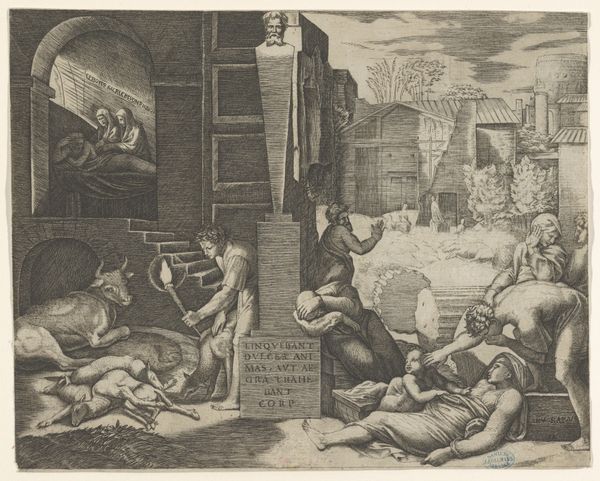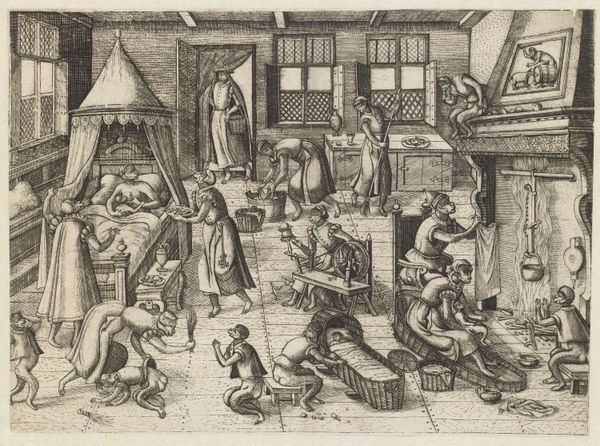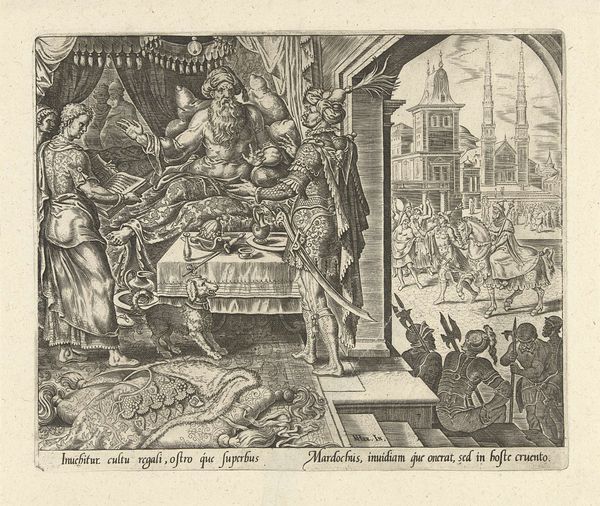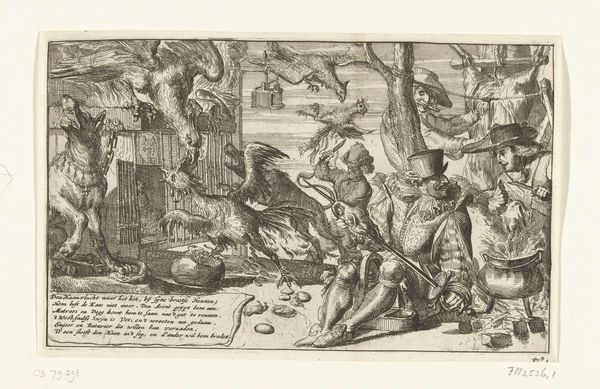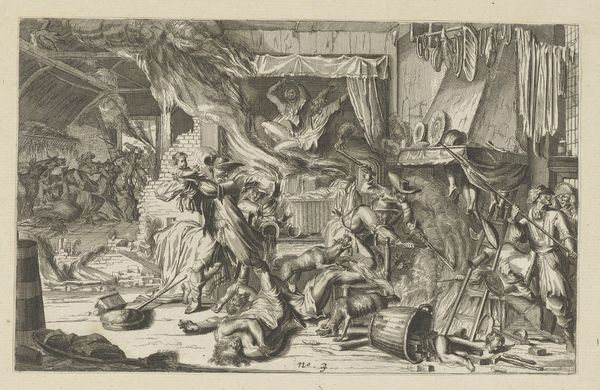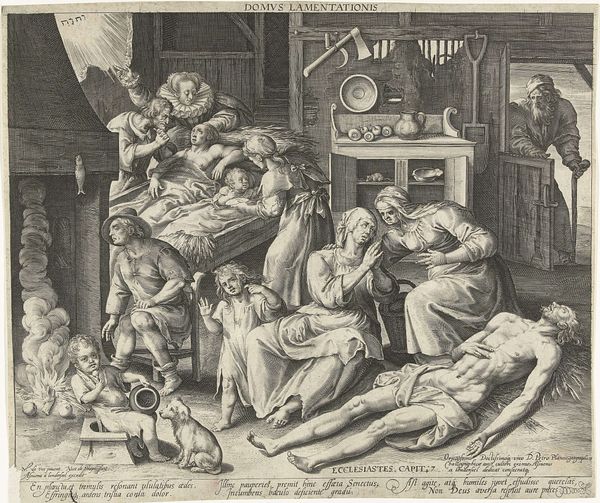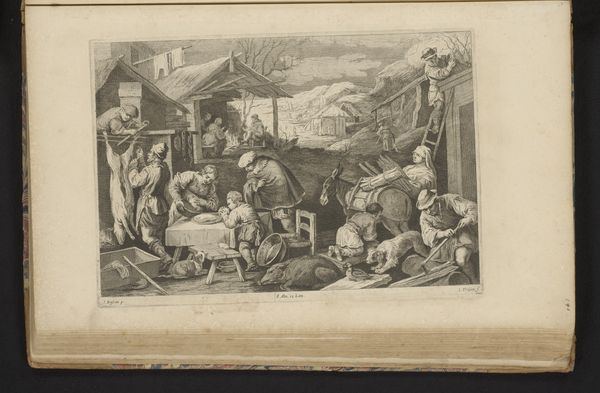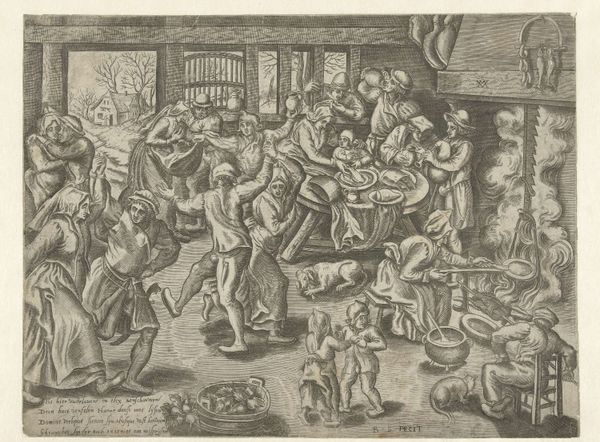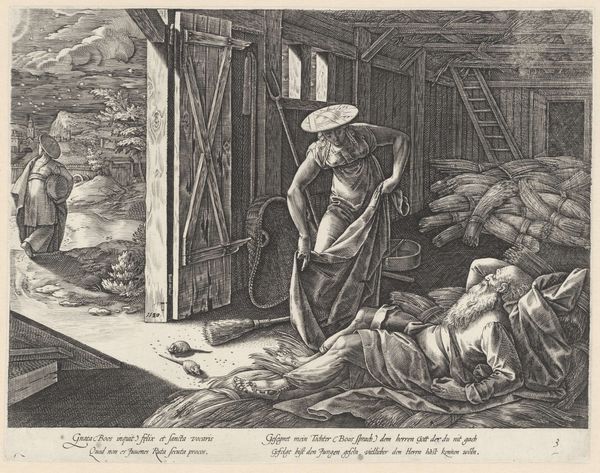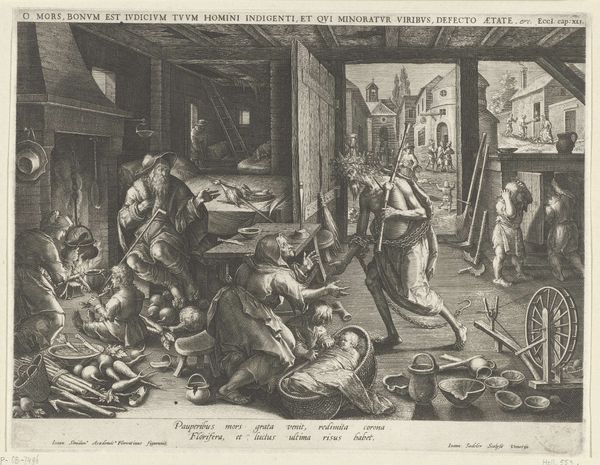
print, etching, engraving
# print
#
etching
#
landscape
#
figuration
#
history-painting
#
italian-renaissance
#
engraving
Dimensions: height 190 mm, width 241 mm
Copyright: Rijks Museum: Open Domain
Editor: This etching, “Pest bij de Trojanen op Kreta en droom van Aeneas,” was created around 1515 by an anonymous artist. It depicts a chaotic scene filled with figures in distress. It looks to me as though death is looming over this entire landscape. How do you interpret this work, focusing on its formal qualities? Curator: Observe the stark contrast between the foreground and background. The foreground is dominated by intricate linework, defining the suffering figures, while the background shifts to broader, less detailed strokes indicating distance and perhaps, a separation of realities, suggesting the "dream" aspect of the title. Editor: So, you are saying the visual structure itself reinforces the narrative's dichotomy between tangible suffering and the ephemeral realm of dreams? Curator: Precisely. Consider also the use of hatching and cross-hatching. Note how it intensifies in areas of shadow, amplifying the drama. It's not merely representational, it’s deeply expressive, pushing the print medium to its limits. Where does your eye linger in the composition, and why? Editor: I keep returning to the figure poised to strike the bull. The diagonal of the axe creates a sense of impending action, breaking up what would otherwise be a series of horizontal forms representing suffering. Curator: Excellent observation. That diagonal not only disrupts the horizontal, creating visual tension, but it directs our gaze across the image, binding the diverse elements into a unified, albeit disturbing, composition. The medium itself becomes a crucial voice, wouldn't you agree? Editor: Absolutely. I came in with an impression of death and chaos, but I leave appreciating how meticulously that impression was crafted through line, contrast, and composition.
Comments
No comments
Be the first to comment and join the conversation on the ultimate creative platform.
